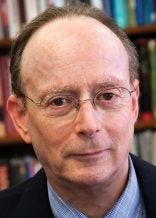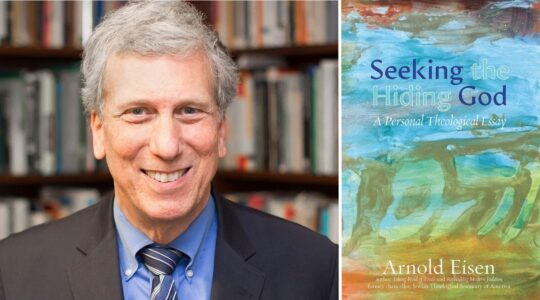This week’s biennial convention of the Union for Reform Judaism (URJ), marking the transition to new leadership at the helm, is being hailed as a celebration, and one can see why.
An estimated 6,000 delegates are gathering in Washington, D.C., making the five-day, sold-out conference the largest North American Jewish gathering of the year and underscoring the fact that the Reform movement is the largest of the denominations, with some 900 congregations and 330,000 member households. President Barack Obama is scheduled to address the convention — further proof of its clout — as will House Majority Leader Eric Cantor and Israeli Defense Minister Ehud Barak, headlining scores of speakers.
But the emotional highlight may well be when the participants witness Rabbi Eric Yoffie, 64, whose 16-year tenure has been marked by an emphasis on Torah study and ritual tradition, preach his last Shabbat sermon in the role of president, and the next morning hear president-elect Rabbi Richard (Rick) Jacobs of Westchester Reform Temple outline his vision for the movement’s future.
At a time of critical transition in the movement, there is a sense of anticipation and excitement among the faithful, fueled in part by Rabbi Jacobs’ charismatic optimism. He is expected to call for a “big tent” approach and issue a charge to imagine the Jewish future in bold ways, reaching out to the community and beyond, to “recover the larger sense of ‘we,’” as he puts it, while strengthening the movement from within.
But under the surface, there are roiling concerns within the movement, from sharp internal disagreements over dues structure, budgets and finance to wider worries over staggering dropout rates — up to 80 percent for teens, and 50 percent for members within a year after their child’s bar or bat mitzvah.
“If families are not staying in the synagogue for themselves, there is no hope for the future,” confided Rabbi Peter Rubinstein of Central Synagogue, the venerable, thriving East Side Reform congregation.
Complex Equation
A major theme of the biennial is re-engaging youth, and a special campaign has been launched to retain post-bnai mitzvah teens in synagogues, Hebrew schools and summer camps. An Education Summit at the conference will offer workshops and programs focused on how coordinated efforts within the movement can help inspire young people.
In addition, an ongoing core program of the movement for the last three decades — welcoming interfaith families and encouraging their participation in congregational life — will be highlighted this week. But it’s a complex equation that tends to mask, or perhaps even cause, other problems.
For example, the fact that the number of Reform Jews in the U.S. is not growing despite the increase in interfaith families joining Reform temples — more than 20 percent of member families — indicates that there are fewer Jewish members of the movement today than in decades past. Some rabbis worry about “the lack of knowledge and depth and commitment out there,” as one put it. And with notable exceptions, studies find that intermarried couples in Reform temples are less Jewishly active than other congregants, says Steven M. Cohen, a sociologist at Hebrew Union College-Jewish Institute of Religion.
Rabbi Randy Sheinberg of Temple Tikvah in New Hyde Park, L.I., estimates that about one-third of her congregation’s 300 families are interfaith, and that there may be fewer in-married families than when she came eight years ago. But the impact, she said, depends on the interfaith families themselves.
“Some are very committed,” observed the rabbi, and it is not uncommon for the Jewish partner to be strengthened in his or her own commitment as a result of the conscious effort made by the couple to raise Jewish children. “That can be quite wonderful.”
Support the New York Jewish Week
Our nonprofit newsroom depends on readers like you. Make a donation now to support independent Jewish journalism in New York.
But for marginally affiliated interfaith families, “it’s a harder sell to get them to stay” after a child’s bar or bat mitzvah, and “their tenure as members may be shortened.”
This trend clearly has been exacerbated by the economic recession, she noted.
The URJ was hit hard by the 2008 recession and was forced to make major cuts in staffing and programming. It also faced another kind of shock in recent years in the form of dissent from some of its most influential rabbis.
Central Synagogue’s Rabbi Rubinstein led a group of 17 senior rabbis within the movement seeking increased coordination among the URJ, the Central Conference of American Rabbis, the Hebrew Union College and the synagogues, and a greater role for congregations in decision-making.
In an interview this week, he noted that Rabbi Jacobs, the incoming URJ president-elect who will become president officially next June, was an active member of the group, known as the Rabbinic Vision Initiative, and fully understands the issues.
‘All About Transformation’
Indeed, Rabbi Jacobs, a tall, ruggedly handsome man of 56, says the future of Reform Jewry is “all about transformation,” invoking the mantra of Billy Beane, the baseball executive portrayed in the film “Moneyball”: “adapt or die.” The rabbi wants to see Reform Jewry seek out “the unaffiliated and the uninspired,” beyond the walls of the synagogue.
Despite economic woes, he says this is not the time to “scale back” but to reach out more aggressively. Congregations can no longer “sit back and wait” for young adults who drifted away from Jewish life come back and join as young parents, as happened in the past.
This generation is distrustful of denominations and institutions, the rabbi said, and will respond to relationships more than programming. The job of Reform leaders is to reach young people where they are and connect them to the values of the movement, emphasizing ritual and observance, community, social action and moving tradition into modernity, Rabbi Jacobs says, all “rooted in serious Jewish learning at the core.”
It is Rabbi Yoffie who is credited with bringing the movement closer to Jewish tradition anchored by Torah study, increased observance of Shabbat and more spiritual and spirited Friday evening services, with congregants participating rather than playing a passive role.
“This community will be sustained by the synagogue and nothing else,” he said this week, asserting that “the synagogue remains the central institution in Jewish life.”
Rabbi Yoffie’s tenure was also marked by his unabashed, passionate voice as ideological leader, speaking out in defense — and at times criticism — of Israel, seeking greater understanding and cooperation between Muslims and Jews, between Evangelical Christians and Jews, and articulating what it means to be a liberal Jew today.
Support the New York Jewish Week
Our nonprofit newsroom depends on readers like you. Make a donation now to support independent Jewish journalism in New York.
Rabbi Rubinstein says that need for progressive Jews to define and describe their beliefs is paramount.
“I ask members, ‘Why do you care? Why do you care if your children stay Jewish?”
The rabbi holds about 70 informal meetings a year with member families and finds that most people are “beyond inarticulate; they have no words” to express what being Jewish means to them. “There’s a vacuum.”
He says it was a mistake for rabbinical schools to train rabbis not to speak about themselves and their own spiritual struggles. So Rabbi Rubinstein made a point of devoting his Rosh HaShanah and Yom Kippur sermons this year to his own search for God, how he finds God in Jewish existence and the need to articulate one’s feelings and transmit them to one’s children.
“Parents always ask me to talk to their kids” about these issues “but I say no. It needs to come from you to impact your children.”
Rabbi Jacobs believes that in the first months of his tenure “we’ll get clearer about who we are, and live it, and remove the walls” that separate congregations and unaffiliated Jews.
“We need to be less timid about being out” in the wider culture, he says.
Some congregations are wondering about the bottom line for them if the movement spends time and money on an outreach that is not just about increasing membership.
Supporters say they are enthused about Rabbi Jacobs’ confident positioning of Reform Jewry but warn that his first priority must be to address persistent concerns about internal matters. These include the dues structure of the union, which critics say is too high; how synagogues can sustain themselves when younger people want free services; and greater synagogue representation in who speaks for the movement.
“Expectations are very high,” Rabbi Sheinberg of New Hyde Park acknowledges. She believes Rabbi Jacobs is “hoping to create a great deal of excitement inside the movement and the rest will follow.”
How he manages to balance an expansive new vision while addressing deep concerns on the home front remains to be seen, but no doubt he will be advising potential critics: “Adapt or die.”
E-mail: gary@jewishweek.org
Support the New York Jewish Week
Our nonprofit newsroom depends on readers like you. Make a donation now to support independent Jewish journalism in New York.
The New York Jewish Week brings you the stories behind the headlines, keeping you connected to Jewish life in New York. Help sustain the reporting you trust by donating today.





